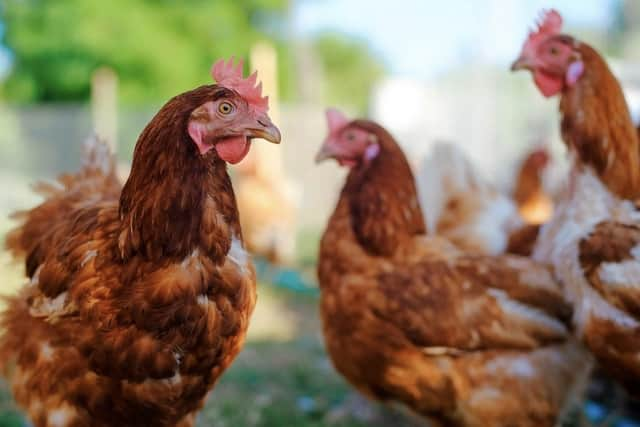Revealed: Triple threat to tackle £300 million poultry problem
and live on Freeview channel 276
Poultry red mites, parasites that live on birds, are so rife that around 60-85% of commercial egg-laying farms can be infested at any one time, causing a significant impact on the health of a flock and hitting egg production and profit.
New research published this year in Poultry Science put the estimated economic impacts of red mites ranging from 50p to £2.20 per bird.
Advertisement
Advertisement
A number of treatments have been developed to control red mites, with research also being carried out into a possible vaccine.


But, says animal nutrition experts Harbro, a combination of factors is the best way to treat the problem.
Kevin Stickney, interim head of technical for Harbro, said the effectiveness of tackling red mites would depend on the level of challenge and other contributory factors, such as weather conditions and poultry house hygiene.
Kevin explained: “In houses with high infestations, treatment will help reduce them. But we know environmental considerations must also be made, such as changing boots, wearing hair nets and clean clothing.”
Advertisement
Advertisement
The most common method to control red mites in poultry houses is pesticides, to which the parasites are becoming increasingly resistant. There are also physical treatments, for example, the use of desiccants to reduce moisture and the growth of red mite habitats.


But, says Kevin, there is a fourth option available, which involves the use of essential oils, such as Mite Shield, which is added into feed.
“The mode of action is that the volatile compounds in essential oils are absorbed into the circulatory system and exuded onto the bird's skin,” said Kevin. “Because this changes olfactory perception, the mite is repelled and no longer recognises its host.
“Because the mite is obligated to consume blood, a failure to feed leads to weakness, inability to reproduce and eventual death of the resident mite population.”
Advertisement
Advertisement
Farmlay in Aberdeenshire, one of Scotland’s largest egg production units, now routinely includes Mite Shield within its feed. Following a warm summer in 2022, more red mites were reported in multiple units.
Once the problem was identified, Mite Shield was added to the home mixed ration.
“We first introduced Mite Shield to the feed last summer when the red mites were starting to have a detrimental effect on health and performance,” said Terry Rotherham, production manager at Farmlay.
“Although results weren’t seen overnight, within 6-8 weeks, the birds regained their condition, and all-round flock performance returned to normal. We now include it routinely as part of the feeding regime as a preventative measure.”
Advertisement
Advertisement
Essential oils also have other benefits to laying hens, including being antibacterial, anti-inflammatory, productivity-enhancing and supportive of gut health.
Research shows the clear benefit essential oils can play, with various effects depending on the oil. Oregano supplementation can improve egg production and internal and external egg quality whilst supporting gut function. Similarly, research published earlier this year has shown that around 3.5% - 5.2% rosemary supplementation improves the feed conversion ratio, leading to body weight gains and egg production and quality increases.